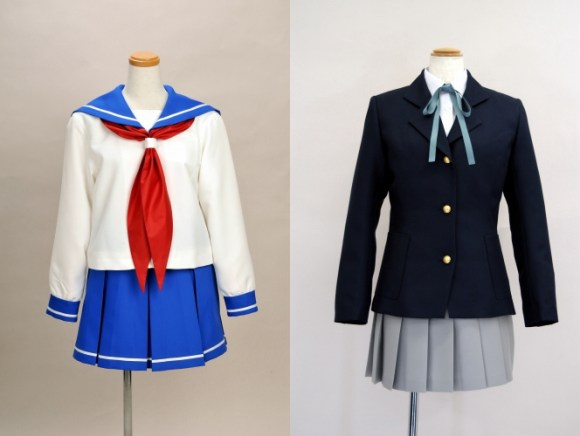
These days, cosplay functions as a 40 billion yen (US$390 million) industry and has a large impact on Japan’s economy. Now, before moving on, please allow me to clarify that ‘cosplay’ to Japan does not only refer to people dressing up as anime and video game characters, but includes all manner of live action, Western, original characters, nurses, maids, and so on. Virtually any costume worn for fun is considered cosplay over here. So what kinds of special services are available to avid cosplayers in Japan? And how are cosplayers themselves making the most out of this bountiful, infinitely tolerant environment?
This is your Throwback Thursday article of the week, your peek into the archives of RocketNews24 featuring articles from back when we were just getting started. We’d hate for you to miss any of the quality quirky news from Asia and Japan just because you recently stumbled upon our site. And if you’re a devout RN24 reader, thanks for sticking around! Enjoy this blast from the past!
(Originally posted on May 16, 2013)
The cosplay sub-culture has been steadily growing for years.
Before the year 2000, the only place you might find cosplay costumes was at general costume shops and adult video stores. But then something changed. In order to appeal to a new demographic of teenage girls, Tokyo’s great and nerdy shopping district, Akihabara, opened a series of specialty shops devoted to cosplay. If cosplay was meant to be fun, then this seemed like the best way to support those who might be interested in giving it a try.
Soon following that came the establishment of stores that sell mass-produced outfits and accessories for popular anime characters as well as some shops that offer order-made costumes. The former specializes in reasonably-priced cosplay that average out at less than 10,000 yen (US$98) per costume. The latter can cost as much as five times that, but for a high-class, made-to-order item. In addition to those, countless online cosplay shops have also come into being.
If there was ever a must-have item for Japanese cosplayers, it’s meishi.
Meishi is another word for business cards, and Japan is absolutely obsessed with them. For cosplayers, exchanging meishi is important to help them remember those they’ve interacted with. However, highly active cosplayers looking to order meishi can find themselves in a bit of a bind. Ordinary manufacturers do not usually accept orders of less than 50 to 100 cards, so if a cosplayer wishes to have a different version of their meishi for every character that they cosplay, this requirement poses a bit of a challenge.
Thankfully, cosplay meishi manufacturers, such as the online design service, Proof, have come up with special order sets containing five designs and 20 cards for each, bringing the total to 100 meishi for (in Proof’s case) 2,625 yen ($25.70). Proof allows its users to submit their own cosplay photos and edit them into a selection of beautiful border designs, allowing even the most inept designers to create their own fabulous meishi.
Japan also provides special ways for finding the most suitable photo backgrounds.
This may come as a surprise to some people, but in Japan it is very bad juju to cosplay in public unless it’s part of your job or you are on location at a cosplay event. It’s not even acceptable to arrive at an event in costume; everyone must change together in designated changing rooms. They do this out of respect for all the normal people going about their daily lives, so as not to cause a disturbance. However, this can make it difficult for cosplayers to find scenery which matches the series that they are cosplaying from.
▼ Image taken from Soi Studio.
In response to this need, a large number of photo studios catering to just cosplayers have been popping up across Japan. There are currently more than 300 of these studios in the metropolitan areas alone! One of the more recent establishments, cosplay studio Booty, has a number of rooms, each with a different theme. Cosplayers must reserve a time slot weeks in advance, but once there they are free to move between all of the different areas and take pictures of themselves.
▼ Pictured here are Booty’s gothic and cyber areas.
Never backing down, cosplayers turn to the Internet.
An increasing number of anime, manga, and doujinshi (self-published comics) events are prohibiting cosplay. One of the most cited reasons for this is to eliminate indecent skin exposure by cosplayers, though compared to a lot of booth babes, that seems like a hard case to make. Nevertheless, cosplayers have found ways to interact with each other even outside of events, thanks to cosplay community websites such as Cure. Cure is especially nice in that there is an English version for international users, though it lacks many of the event planning features of its Japanese counterpart.
Cosplayers are going professional.
As cosplay becomes more widely recognized, its market scale also expands. There are many who pride themselves on donning only the finest brands of costumes and accessories. Of course, there are some who make cosplay for themselves and those who dedicate themselves to perfecting their craft, treating it like a profession. Some cosplayers even go so far as to mix cosplay with the entertainment industry by making videos and photobooks of themselves in costume to be sold at events, earning themselves some level of celebrity status within the cosplay community. And, let’s not forget that a new class of professional cosplay photographers is also emerging.
So, what do you think? How many of these cosplay-specific services are present where you live? And for those that aren’t, do you think they could stand a chance?
Source: Naver Matome (Japanese)
Images: Kenzyy at livedoor, VSmedia
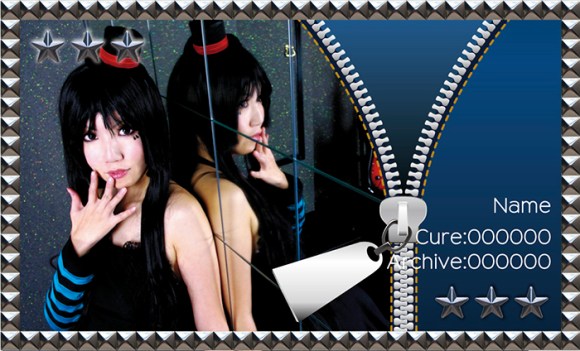
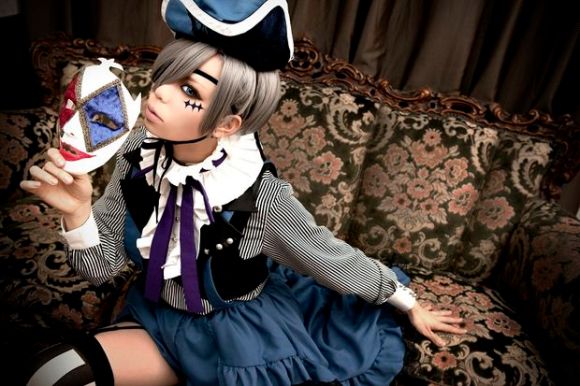
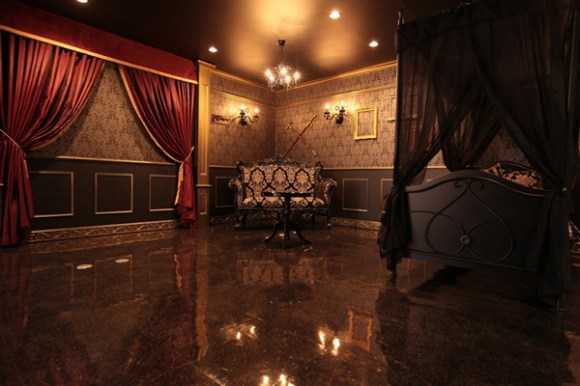

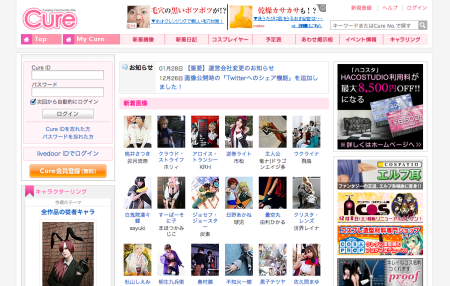
 The best cosplayers from Day One of the Ikebukuro Halloween Cosplay Festival
The best cosplayers from Day One of the Ikebukuro Halloween Cosplay Festival Tokyo’s Nakano to be transformed into cosplay heaven this Halloween for MAG Festa 2015
Tokyo’s Nakano to be transformed into cosplay heaven this Halloween for MAG Festa 2015 Japanese company creates “business card masks” that put your name and workplace on your face
Japanese company creates “business card masks” that put your name and workplace on your face All-night, all-free cosplay event to be held at Tokyo bookstore, applications now being accepted
All-night, all-free cosplay event to be held at Tokyo bookstore, applications now being accepted Japan’s number one cosplayer Enako wows crowds at Halloween event in Tokyo
Japan’s number one cosplayer Enako wows crowds at Halloween event in Tokyo McDonald’s new Happy Meals offer up cute and practical Sanrio lifestyle goods
McDonald’s new Happy Meals offer up cute and practical Sanrio lifestyle goods All-you-can-drink Starbucks and amazing views part of Tokyo’s new 170 meter-high sky lounge
All-you-can-drink Starbucks and amazing views part of Tokyo’s new 170 meter-high sky lounge Studio Ghibli glasses cases let anime characters keep an eye on your spectacles
Studio Ghibli glasses cases let anime characters keep an eye on your spectacles Hey, Japanese taxi driver! Take us to your favorite restaurant in Tsuruga City!
Hey, Japanese taxi driver! Take us to your favorite restaurant in Tsuruga City! Our reporter takes her 71-year-old mother to a visual kei concert for the first time
Our reporter takes her 71-year-old mother to a visual kei concert for the first time Kyoto’s 100 Demons yokai monster parade returns!
Kyoto’s 100 Demons yokai monster parade returns! Beautiful Sailor Moon manhole cover coasters being given out for free by Tokyo tourist center
Beautiful Sailor Moon manhole cover coasters being given out for free by Tokyo tourist center Mister Donut ready to make hojicha dreams come true in latest collab with Kyoto tea merchant
Mister Donut ready to make hojicha dreams come true in latest collab with Kyoto tea merchant More foreign tourists than ever before in history visited Japan last month
More foreign tourists than ever before in history visited Japan last month Hamster abandoned at Tokyo ramen restaurant gets new home
Hamster abandoned at Tokyo ramen restaurant gets new home Disney princesses get official manga makeovers for Manga Princess Cafe opening in Tokyo
Disney princesses get official manga makeovers for Manga Princess Cafe opening in Tokyo Starbucks reopens at Shibuya Scramble Crossing with new look and design concept
Starbucks reopens at Shibuya Scramble Crossing with new look and design concept Beautiful new Final Fantasy T-shirt collection on the way from Uniqlo【Photos】
Beautiful new Final Fantasy T-shirt collection on the way from Uniqlo【Photos】 Is the new Shinkansen Train Desk ticket worth it?
Is the new Shinkansen Train Desk ticket worth it? Foreign English teachers in Japan pick their favorite Japanese-language phrases【Survey】
Foreign English teachers in Japan pick their favorite Japanese-language phrases【Survey】 Japanese convenience store packs a whole bento into an onigiri rice ball
Japanese convenience store packs a whole bento into an onigiri rice ball We try out “Chan Ramen”, an underground type of ramen popular in the ramen community
We try out “Chan Ramen”, an underground type of ramen popular in the ramen community Studio Ghibli releases Kiki’s Delivery Service chocolate cake pouches in Japan
Studio Ghibli releases Kiki’s Delivery Service chocolate cake pouches in Japan Japan’s bone-breaking and record-breaking roller coaster is permanently shutting down
Japan’s bone-breaking and record-breaking roller coaster is permanently shutting down New definition of “Japanese whiskey” goes into effect to prevent fakes from fooling overseas buyers
New definition of “Japanese whiskey” goes into effect to prevent fakes from fooling overseas buyers Our Japanese reporter visits Costco in the U.S., finds super American and very Japanese things
Our Japanese reporter visits Costco in the U.S., finds super American and very Japanese things Studio Ghibli unveils Mother’s Day gift set that captures the love in My Neighbour Totoro
Studio Ghibli unveils Mother’s Day gift set that captures the love in My Neighbour Totoro Foreign passenger shoves conductor on one of the last full runs for Japan’s Thunderbird train
Foreign passenger shoves conductor on one of the last full runs for Japan’s Thunderbird train Domino’s Japan now sells…pizza ears?
Domino’s Japan now sells…pizza ears? New Japanese KitKat flavour stars Sanrio characters, including Hello Kitty
New Japanese KitKat flavour stars Sanrio characters, including Hello Kitty Kyoto creates new for-tourist buses to address overtourism with higher prices, faster rides
Kyoto creates new for-tourist buses to address overtourism with higher prices, faster rides Sales of Japan’s most convenient train ticket/shopping payment cards suspended indefinitely
Sales of Japan’s most convenient train ticket/shopping payment cards suspended indefinitely Sold-out Studio Ghibli desktop humidifiers are back so Totoro can help you through the dry season
Sold-out Studio Ghibli desktop humidifiers are back so Totoro can help you through the dry season Japanese government to make first change to romanization spelling rules since the 1950s
Japanese government to make first change to romanization spelling rules since the 1950s Ghibli founders Toshio Suzuki and Hayao Miyazaki contribute to Japanese whisky Totoro label design
Ghibli founders Toshio Suzuki and Hayao Miyazaki contribute to Japanese whisky Totoro label design Doraemon found buried at sea as scene from 1993 anime becomes real life【Photos】
Doraemon found buried at sea as scene from 1993 anime becomes real life【Photos】 Tokyo’s most famous Starbucks is closed
Tokyo’s most famous Starbucks is closed One Piece characters’ nationalities revealed, but fans have mixed opinions
One Piece characters’ nationalities revealed, but fans have mixed opinions We asked a Uniqlo employee what four things we should buy and their suggestions didn’t disappoint
We asked a Uniqlo employee what four things we should buy and their suggestions didn’t disappoint Princesses, fruits, and blacksmiths: Study reveals the 30 most unusual family names in Japan
Princesses, fruits, and blacksmiths: Study reveals the 30 most unusual family names in Japan Japanese cosplayer shows ingenious way to fake muscles using silicone push-up bras
Japanese cosplayer shows ingenious way to fake muscles using silicone push-up bras Japanese town promotes itself as a cosplay-friendly destination
Japanese town promotes itself as a cosplay-friendly destination “No low angles!” and other Comiket cosplay photography rules
“No low angles!” and other Comiket cosplay photography rules The results are in! Team Mexico wins the 2018 World Cosplay Summit【Photos & Videos】
The results are in! Team Mexico wins the 2018 World Cosplay Summit【Photos & Videos】 The best Japanese cosplayers from Day 1 of Summer Comiket 2019【Photos】
The best Japanese cosplayers from Day 1 of Summer Comiket 2019【Photos】 The best cosplayers from Day One of the Ikebukuro Halloween Cosplay Festival 2023
The best cosplayers from Day One of the Ikebukuro Halloween Cosplay Festival 2023 Cosplay Yokocho: Tokyo alley where customers eat and drink in cosplay costumes
Cosplay Yokocho: Tokyo alley where customers eat and drink in cosplay costumes 【TBT】The avant-garde art of book stacking in stores of Japan
【TBT】The avant-garde art of book stacking in stores of Japan Cosplayers find a way to enjoy Japan’s love hotels while staying fully clothed: Photo sessions
Cosplayers find a way to enjoy Japan’s love hotels while staying fully clothed: Photo sessions Cosplay lucky bag delivers costumes aimed at first-time cosplayers in Japan
Cosplay lucky bag delivers costumes aimed at first-time cosplayers in Japan The best Japanese cosplayers from Day 3 of Winter Comiket 2018【Photos】
The best Japanese cosplayers from Day 3 of Winter Comiket 2018【Photos】 The beautiful cosplayers of summer Comiket 2018【Photos】
The beautiful cosplayers of summer Comiket 2018【Photos】 50-year-old Japanese woman pulls off amazing Love Live! anime idol cosplay【Photos】
50-year-old Japanese woman pulls off amazing Love Live! anime idol cosplay【Photos】 Summer Comiket is sizzling hot this year, and it’s not because of the weather 【Pics】
Summer Comiket is sizzling hot this year, and it’s not because of the weather 【Pics】 Tokyo indoor anime theme park launches new cosplay rental service
Tokyo indoor anime theme park launches new cosplay rental service
Leave a Reply